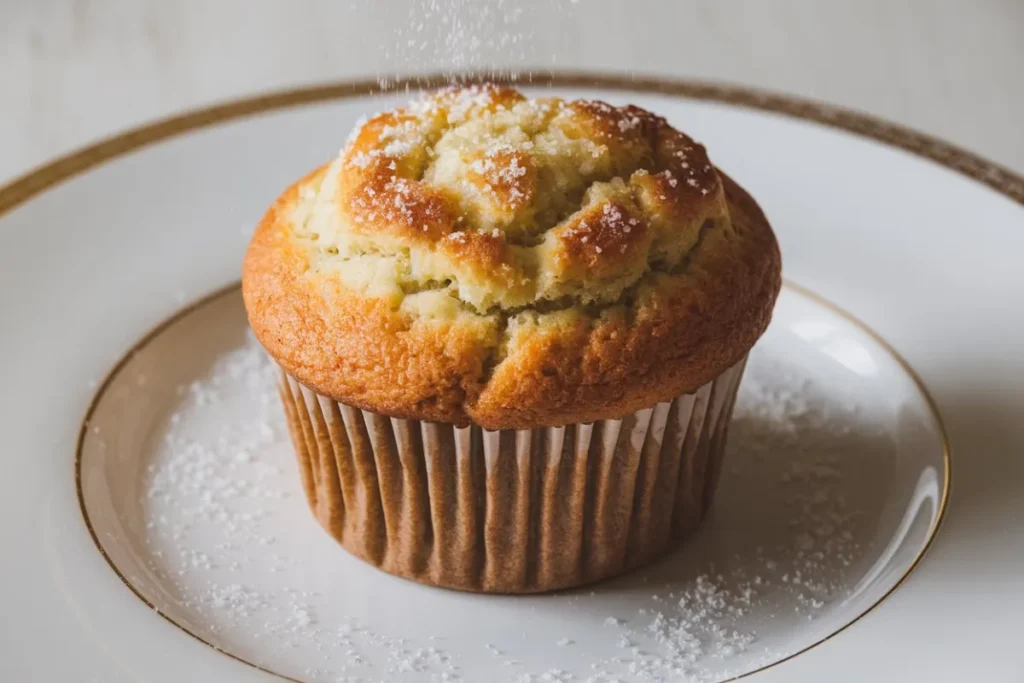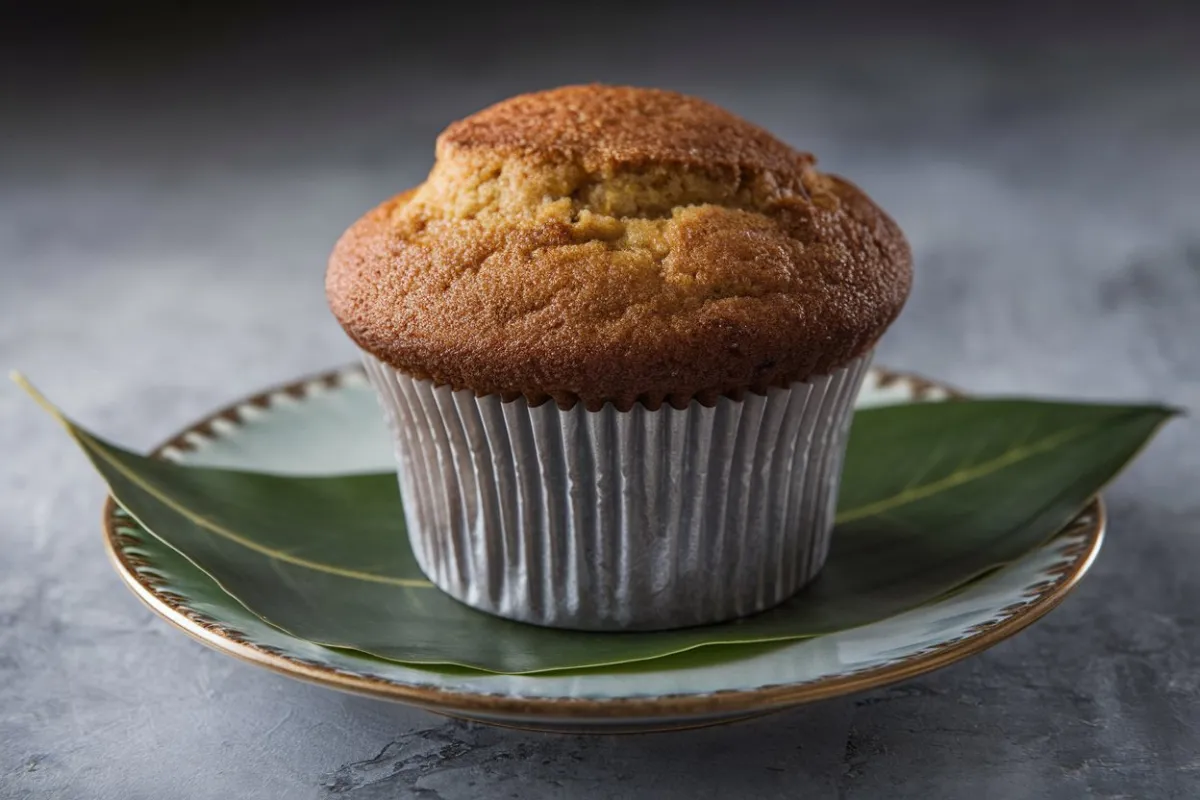Muffins are a beloved treat enjoyed by many worldwide, whether as a quick breakfast option or a sweet afternoon snack. Yet, achieving those high-domed muffins with a beautiful, golden-brown top and a fluffy interior often remains an elusive goal for home bakers. So, what is the secret to high muffins? This article will dive into the secrets behind baking perfect, bakery-style muffins that rise high every time.
Understanding the Basics of Muffin Baking
The Appeal of High Muffins
What is the secret to high muffins, and why do we crave them? Aesthetically, a muffin with a rounded, high dome looks more appetizing and generous, almost like you’re getting extra for the same price. But it’s not just about looks—taller muffins also tend to have a lighter, fluffier texture due to the way the batter rises during baking. However, baking these perfect muffins at home can be challenging due to several common issues, like overfilling the batter or using the wrong baking temperature.
To uncover the secret, it’s essential first to understand what makes muffin batter different from other baked goods, like cupcakes. Cupcake batter is typically sweeter, richer, and often involves creaming butter and sugar together to incorporate air. Muffin batter, on the other hand, should be mixed gently to maintain a denser, more textured crumb.
Key Factors in Achieving High Muffins
To discover what is the secret to high muffins, consider several factors that determine whether your muffins rise high or fall flat. Let’s explore the most critical elements:
- Ingredients and Their Role in Muffin Height
- Flour Types: All-purpose flour is usually recommended, but you can experiment with whole wheat flour or gluten-free flour blends, which may affect the rise.
- Leavening Agents: Using the correct ratio of baking powder and baking soda is crucial. Too much or too little can result in flat, dense muffins. Fresh leavening agents are key to a good rise.
- Fats: The choice between butter, oil, or a combination will affect both the texture and height of your muffins. Butter provides flavor, while oil can help maintain a moist, light crumb.
- Liquids: Incorporating the right liquids, such as milk, buttermilk, or yogurt, impacts how the muffins rise. The acidity in buttermilk or yogurt, for example, reacts with baking soda to help create that high dome.
- Importance of Fresh Ingredients
- Fresh ingredients ensure proper chemical reactions during baking. For instance, stale baking powder or soda may fail to provide the necessary rise, resulting in flat, heavy muffins. Understanding these ingredients is crucial to learning what is the secret to high muffins.
Bakery Secrets to High Domed Muffins

Achieving those beautifully tall muffins isn’t just about the ingredients—it’s also about the techniques you use. Two key secrets from professional bakers can transform your muffin-making process and help you discover what is the secret to high muffins.
Letting the Batter Rest
One of the most effective ways to achieve high muffins is to let the batter rest. Allowing your muffin batter to rest for at least an hour, or even overnight in the refrigerator, is a crucial step. During this resting period:
- Starch molecules in the flour absorb the liquid in the batter, leading to a thicker consistency.
- Any gluten formed during mixing has time to relax, reducing the chance of tough muffins.
- Air bubbles work their way out slowly, creating a more even rise during baking.
By giving your batter time to rest, you set the stage for a better oven spring—the rapid rise that happens in the first few minutes of baking.
Oven Temperature and Placement
The second key secret to achieving high muffins lies in baking temperature and placement. Start baking your muffins at a higher temperature, around 425°F, for the first 6-9 minutes. This initial high heat causes the batter to have a greater oven spring, a phenomenon where the batter rises rapidly during the early stages of baking due to the formation of steam.
After this initial high-heat period, reduce the oven temperature to 350°F without opening the oven door. This approach ensures that the muffins continue to cook evenly without collapsing. Additionally, place the muffin tray on the upper third of the oven where the heat is more consistent and slightly hotter, promoting a taller rise. For further insights into oven temperature and baking success, this resource can provide deeper understanding.
Techniques for Preparing Muffin Batter
Perfect muffins require a careful approach to mixing and preparing the batter. Overmixing can be a common pitfall leading to dense, tough muffins. Knowing these techniques is part of the secret to high muffins.
Correct Mixing Methods
- Always mix the dry ingredients separately before combining them with the wet ingredients.
- Use a spatula or spoon rather than an electric mixer to avoid overmixing.
- Mix until just combined to prevent gluten development, which can make the muffins dense and chewy instead of light and fluffy.
Tips for Maintaining Batter Consistency
- The batter should be thick but not dry. If the batter seems too thick, add a little more liquid, like milk or buttermilk, one tablespoon at a time.
- Avoid using a whisk or mixer for combining ingredients, as these can overwork the batter and lead to a loss of volume and height.
Secrets of Proper Muffin Pan Preparation
Understanding how to prepare your muffin pan is another crucial aspect of learning what is the secret to high muffins.
Choosing the Right Muffin Liners
- Select high-quality muffin liners that don’t collapse or stick to the muffins.
- Ensure liners are properly fitted to the muffin tin; poorly fitted liners can lead to uneven baking and reduced muffin height.
The Role of Muffin Pan Material
- Use a metal muffin pan for the best results. Dark-colored pans absorb more heat, promoting a better rise, while light-colored or silicone pans may not get hot enough for the muffins to rise properly.
Using Water to Prevent Empty Pan Cavities from Burning
- If there are empty cups in your muffin pan, fill them halfway with water. This practice ensures even baking and prevents the pan from warping or the empty cups from burning.
Baking Process for High Muffins
A step-by-step guide to the baking process is essential to achieve the perfect rise and discover what is the secret to high muffins.
Step-by-Step Guide to Baking High Muffins
- Preheat the Oven to 425°F
Start by preheating your oven to a high temperature. This initial burst of heat helps muffins rise quickly. - Prepare the Muffin Pan
Line your muffin tin with high-quality liners and spray the top of the pan with non-stick spray to prevent overflow. - Fill the Muffin Cups Properly
- Fill the muffin cups almost to the top, leaving only a slight gap (about 1/8 of an inch). Overfilling can cause spillage, while underfilling may prevent the muffins from rising properly.
- Initial High-Heat Bake
Bake the muffins at 425°F for 6-9 minutes. Check if the muffins are about a quarter to half an inch above the paper liner, then reduce the oven temperature to 350°F without opening the door. - Continue Baking at Lower Temperature
Continue baking for another 6-10 minutes or until a toothpick inserted comes out clean or with a few crumbs. - Cool Muffins Properly
Allow muffins to cool in the pan for 1-2 minutes before transferring them to a cooling rack. Leaving them in the pan too long can make the sides and bottom soggy.
Common Mistakes and How to Avoid Them
Even experienced bakers can make mistakes. Here are some common errors and how to avoid them to master what is the secret to high muffins:
- Overfilling Muffin Cups: Only fill each cup nearly to the top—excessive batter will spill over and make a mess.
- Using Incorrect Oven Temperatures: Always start with a high oven temperature to encourage rapid rising.
- Leaving Muffins in the Pan Too Long: Remove muffins from the pan to cool on a rack to prevent sogginess.
FAQs: Common Questions on High Muffins
- Why are my muffins flat?
Flat muffins can be caused by overmixing, old leavening agents, or baking at too low a temperature. Ensure you follow the tips on resting batter and using the right temperature. - Can I use a boxed muffin mix?
Boxed mixes can work but typically lack the freshness and customizability of homemade mixes. For best results, use a from-scratch recipe. - What if I don’t have buttermilk?
You can make a buttermilk substitute by adding 1 tablespoon of vinegar or lemon juice to 1 cup of milk. - How do I prevent muffins from sticking to the liners?
Use high-quality liners and spray the tops of the muffin pans with non-stick spray to ensure easy release. - What is the best way to store muffins?
Store muffins in an airtight container at room temperature for up to two days or freeze them for longer shelf life.
Advanced Tips for Expert-Level High Muffins
Once you’ve mastered the basics, there are several advanced techniques to elevate your muffin-making skills further and uncover even more of what is the secret to high muffins.
Experimenting with Add-Ins
- Incorporate fruits, nuts, or chocolate chips into your batter. Ensure add-ins are evenly distributed to prevent muffins from becoming lopsided during baking.
Adjusting Recipes for Altitude
- At high altitudes, baking times and temperatures may need to be adjusted to compensate for lower air pressure. Increase the oven temperature by 15-25 degrees and reduce baking time slightly.
Using a Baking Stone or Preheated Pan for Heat Retention
- Placing a baking stone or preheated pan on the bottom oven rack can help retain heat, promoting even rising and consistent results.
Conclusion: The Path to Perfect Muffins
By understanding what is the secret to high muffins, you can consistently bake delicious, towering muffins at home. Remember to use fresh ingredients, rest your batter, and start with a high oven temperature for the best results. Experiment with different recipes and enjoy the process of perfecting your muffin-making skills. Happy baking!

